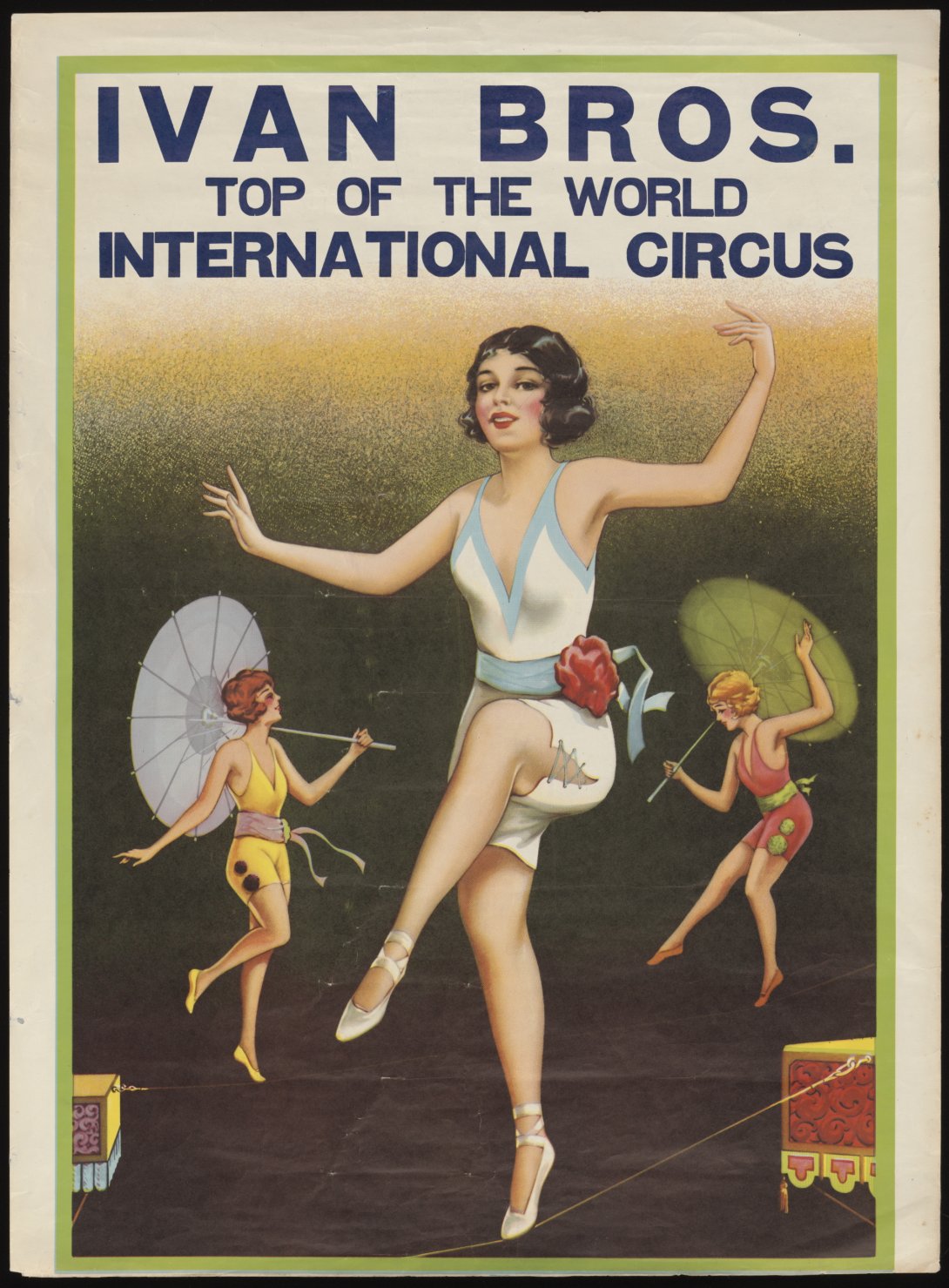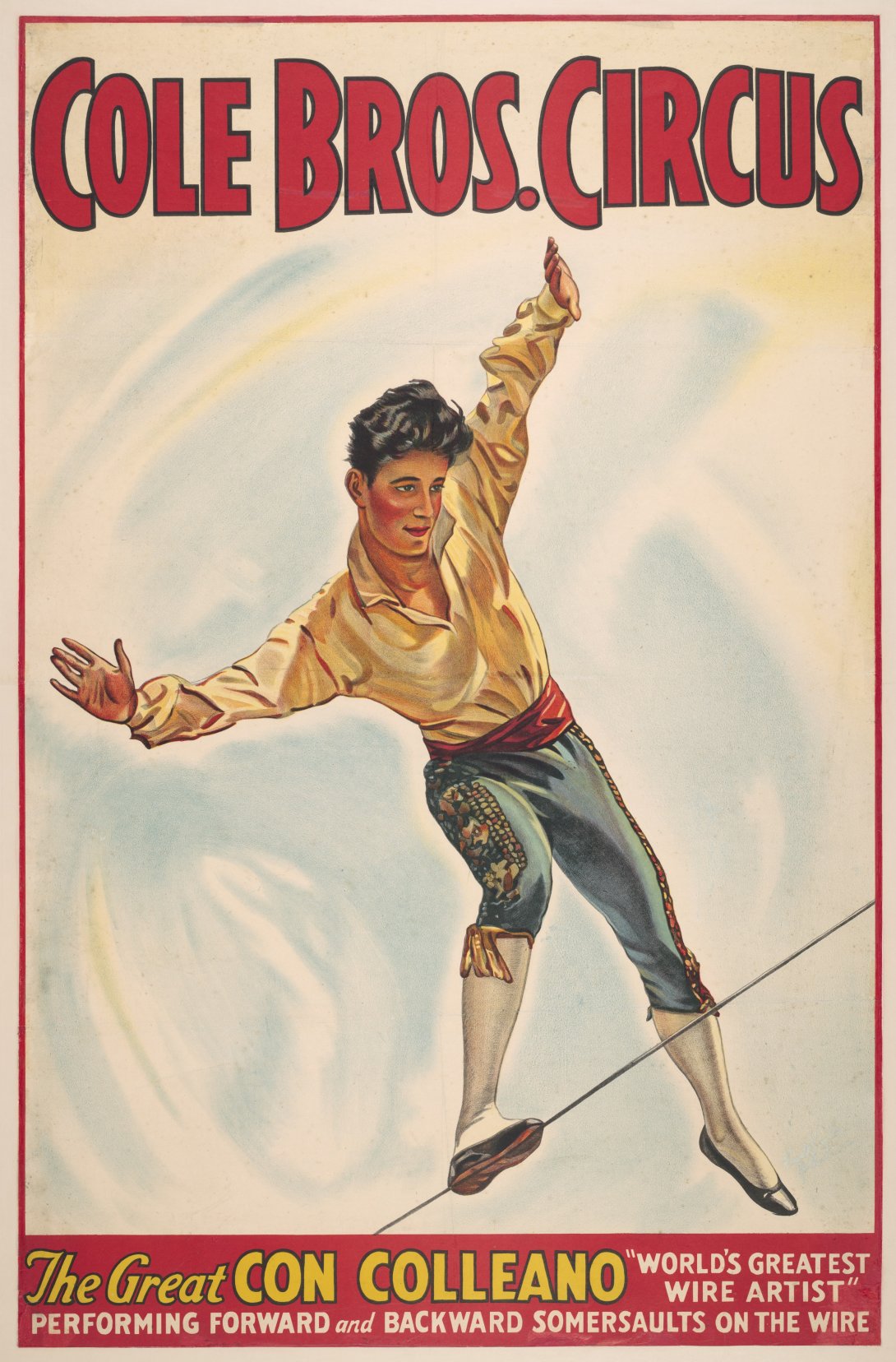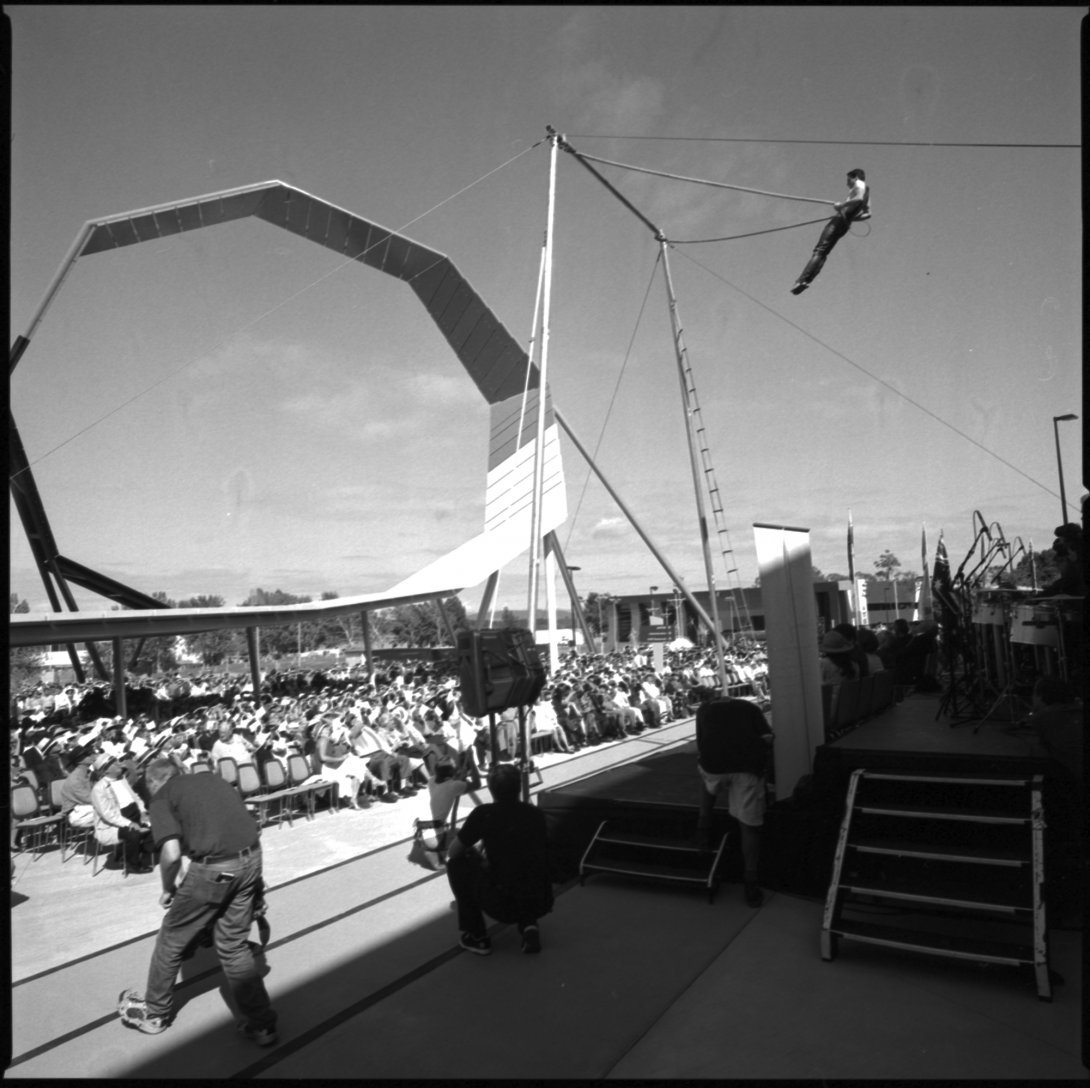Due to scheduled maintenance, the National Library’s online services will be unavailable between 8pm on Saturday 7 December and 11am on Sunday 8 December (AEDT). Find out more.
The circus has a long tradition in Australia and it’s a spectacle that has evolved over time. From childhood memories of colour, noise and excitement through to adult recollections of time spent enjoying the delights of a travelling circus, the pleasures circuses have offered generations of Australians are undeniable. The Library’s oral history collection contains a wealth of recollections about circuses and their place in Australian hearts over the decades.

The longest running circus in Australia is Ashton Circus, which was founded in 1847 and still operates today. In an oral history interview with John Meredith, Douglas and Phyllis Ashton shared their recollections that dated back to the early twentieth century.

Douglas Ashton, the fourth-generation member to become involved with the Ashton Circus, saw the circus evolve from travelling by horse and wagon through to an event that traversed the country in motorised vehicles.
In 1993, he mused on the appeal of the circus to a wide audience. He declared:
'It’s good clean comedy. There’s nothing in it you’d be ashamed to take your children to see...with circus, it’s not like theatre where you’ve got to sit in your seat and be quiet...why we cater for the family man, for everybody.'
Many who have worked in circuses have pointed out the need to be multi-talented. Jim Dimo notes:
'I did work for a while as a hypnotist, as a musical clown. I was an acrobat, you know. I was doing just about anything possible to do. I was in many circuses where I did perform. You see, in the circus you just put another wig on and a little moustache or something like that and the people don't recognise you.'
Albert ‘Fuzzy’ Hearn, born in 1928, pointed out that in his view, being a clown was perhaps the most difficult role in the circus. Ironically, he’d initially chosen the role because he thought it might be one of the easiest to learn. He says:
'Everyone specialising in something…so I decided to take the easy way out and take clowning as my speciality. Little did I know that was the toughest one of the lot because when you stop and think about it, if you’re on a trapeze act, you can’t just clown the trapeze act. You have to learn to fly, you have to do everything the others do first and then you have to do the clowning. You have to do a difficult trick and make it look simple so it’s humorous. You know, that’s the thing. So you learn twice as much!'
Indigenous people have played a critical role in Australian circuses over time. Indeed, Con Colleano, whose mother was a Bundjalung woman and who was born in 1899, was one of the most highly paid circus performers of his time due to his innovation and ability, which included being the first person to successfully attempt a forward somersault on a tightrope.

Con Colleano and his brother Maurice Colleano were interviewed together by Mark St Leon in 1951. Maurice was very keen to make clear Con’s extraordinary contribution to the circus world – not just in Australia but internationally. He said:
'Well, it all started right here in Australia…and when we sold out here in 1921, we all went to America, and of course Con became the star of the Ringling Brothers and Barnham and Baileys Circus, and recently that he's been featuring and starring with the Hopalong Cassidy Show…and he's a very big star in America.'
Dawn de Ramirez, an Aboriginal woman, was interviewed by Rob Willis in 2019 and remembers the quirks of fate that saw her take up a role as Buffalo Bill’s knife throwing assistant. She saw an advertisement in the paper for “three young lady typists required to travel to Australia and New Zealand with circus”. However, when she went to talk about the job, she found they’d all be taken but was offered the role of Buffalo Bill’s knife throwing assistant. She laughingly recalled that:
'There was a spinning wheel and you were on it, and spinning around, and he’d throw knives in between and everything, but it didn’t bother me. People would say later, you must have been terrified he’d hit you!’ No. It didn’t bother me in the least.'
The traditions of the circus have evolved over time in Australia. Exotic animals are no longer featured and women are welcomed as ringmasters. Companies such as the Flying Fruit Fly Circus, Australia’s national youth circus, trains a new generation of children and young people in circus skills.

However, so much of what has drawn generations of Australians to the circus still remains. Whether it be the strength and impressive feats of trapeze artists and acrobats, the daring and talent of high wire walkers and the humour of clowns, the sheer escapism the circus offers still remains.